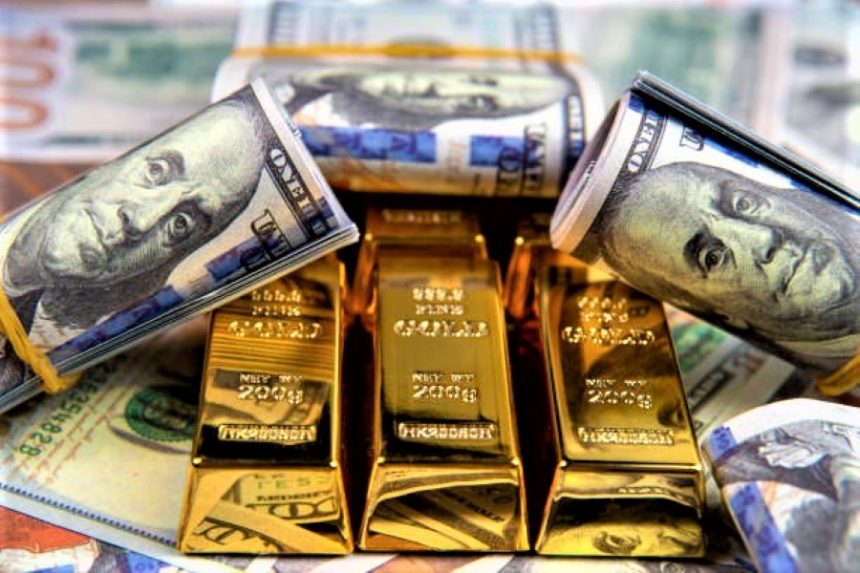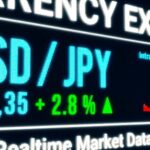Trump Eases Tariff Tensions with EU Gold Dips but Holds Strong
Gold prices retreated slightly on Monday, trading just below $3,340 per ounce, as investors took profits from Friday’s gains. Markets were mostly subdued due to the Memorial Day holiday in the United States, with thin liquidity amplifying minor price movements. While the yellow metal slipped to around $3,330 during early European hours, the pullback is viewed more as a technical correction than the start of a sustained decline.
The catalyst behind this cautious profit-taking was U.S. President Donald Trump’s surprise announcement on Sunday, stating that the U.S. will delay the implementation of 50% tariffs on European Union (EU) imports until July 9. The decision followed a direct conversation between Trump and European Commission President Ursula von der Leyen. The delay offers a window of opportunity for both sides to resolve their trade differences diplomatically—an event markets welcomed with a risk-on sentiment.
Gold’s Safe-Haven Appeal Still Intact Amid U.S. Fiscal Fears
Despite the modest decline, analysts caution against reading too much into the move. Gold’s safe-haven status remains underpinned by persistent concerns about the U.S. fiscal outlook. President Trump’s newly proposed tax bill, which passed the House last week and awaits debate in the Senate, is likely to widen the federal deficit significantly.
Investors are growing increasingly wary that this fiscal expansion could exacerbate U.S. debt levels at a time when global demand for U.S. Treasuries is under strain. The specter of long-term inflation and structural debt issues continues to offer underlying support to gold, even as short-term risk sentiment ebbs and flows with political developments.
Tariff Delay Buoys Market Sentiment, But Uncertainty Lingers
Trump’s delay of the EU tariff implementation—originally scheduled for late May—has injected temporary optimism into global markets. Stocks across Europe and Asia opened higher, buoyed by relief that a major trade disruption has been temporarily avoided. However, analysts remain skeptical of a fundamental shift in Trump’s protectionist stance.
Josh Gilbert, market analyst at eToro, cautioned that these delays are tactical rather than strategic. “Pauses are all well and good for now, but during this time, we need to see more agreements in place to confirm Trump’s more negotiable approach,” he told Bloomberg.
Furthermore, Trump’s threat to Apple Inc. Warning of 25% tariffs if the tech giant continues manufacturing its iPhones outside the U.S. reinforces the administration’s hardline position on domestic industrial policy. This raises questions about the longevity of the tariff truce and keeps geopolitical risk alive in the background.
Vietnam Moves Toward Regulated Gold Trading
Elsewhere in Asia, Vietnam made headlines with a potential game-changer in gold market dynamics. Prime Minister Pham Minh Chinh directed key government agencies to explore the creation of a regulated gold exchange. The aim is to allow public participation in gold trading in a transparent manner while curbing illicit trading and manipulation.
Vietnam has long struggled with illegal gold smuggling and black-market transactions, which distort domestic pricing and disrupt monetary stability. A formal exchange would not only improve price discovery but could also make Vietnam a more prominent player in the global gold market. This development adds an interesting layer to the broader Asian demand picture, particularly if it leads to increased institutional participation from Vietnam.
Dollar Weakens Further as Speculative Bets Turn Cautious
The U.S. Dollar also saw renewed weakness on Monday, extending losses from late last week. The Dollar Index (DXY) remained under pressure amid rising skepticism about America’s fiscal sustainability. With the Trump tax bill poised to reduce revenues and expand deficits, confidence in the greenback is waning.
Recent data from the U.S. Commodity Futures Trading Commission (CFTC) showed that speculative short positions on the dollar were trimmed slightly—from $16.5 billion to $12.4 billion—but the overall sentiment remains bearish. The dollar’s weakness typically serves as a tailwind for gold prices, as it makes the metal more attractive to holders of other currencies.
While today’s thin trading conditions due to the U.S. public holiday are exaggerating price moves, analysts expect dollar weakness to persist in the medium term, especially if the fiscal situation continues to deteriorate without countermeasures from policymakers.
Calm Before the Storm? Market Volatility Likely to Rise
The muted activity in Monday’s trading may be short-lived. Markets are bracing for heightened volatility later in the week as more data and political developments unfold. The U.S. Senate’s approach to the Trump tax bill will be closely scrutinized. Any indications of increased spending or reduced revenues could reignite concerns about the government’s fiscal trajectory.
Additionally, traders are eyeing key economic indicators due later this week, including revised U.S. GDP figures, the PCE inflation report, and speeches from several Federal Reserve officials. These events could recalibrate expectations around interest rate cuts and reignite momentum in both gold and currency markets.
Technical Outlook: Gold Remains in Uptrend Despite Pullback
From a technical standpoint, gold remains in a strong uptrend, supported by a bullish medium-term structure. The dip towards $3,330 is seen as a healthy retracement after last week’s surge. Key support is located around the $3,310–$3,320 area, where buyers are expected to emerge.
Resistance lies near Friday’s high around $3,355. A sustained break above that level could open the path toward $3,400—a psychological milestone that would likely attract fresh buying interest, particularly if the U.S. Dollar continues to weaken or political risk escalates.
Conclusion: Structural Tailwinds Still Favor Gold
While Monday’s price action may suggest a pause in gold’s rally, the broader fundamentals remain intact. Fiscal instability in the U.S., persistent trade uncertainties, and geopolitical tensions continue to offer robust support for the precious metal. The temporary calm in markets, induced by a U.S. holiday and tariff delay, provides a window for consolidation—but not capitulation.
Unless there is a significant shift in either U.S. fiscal policy or global trade dynamics, gold is likely to remain in demand as a hedge against both inflation and geopolitical volatility.









